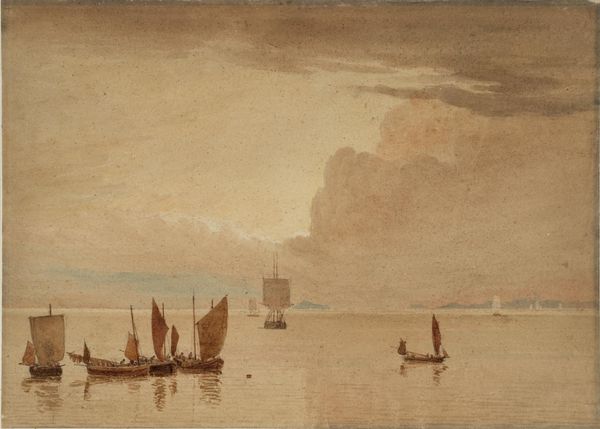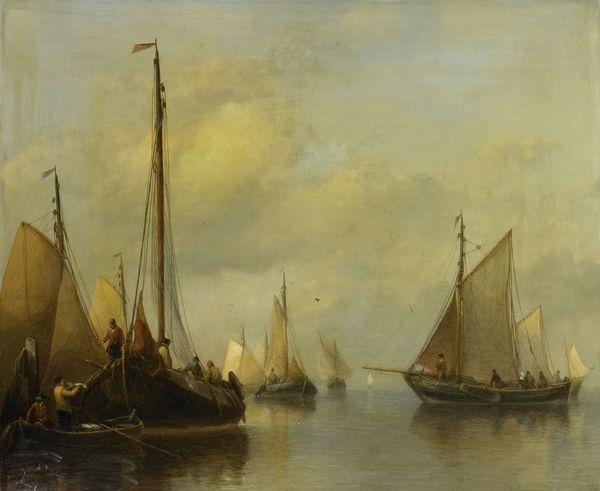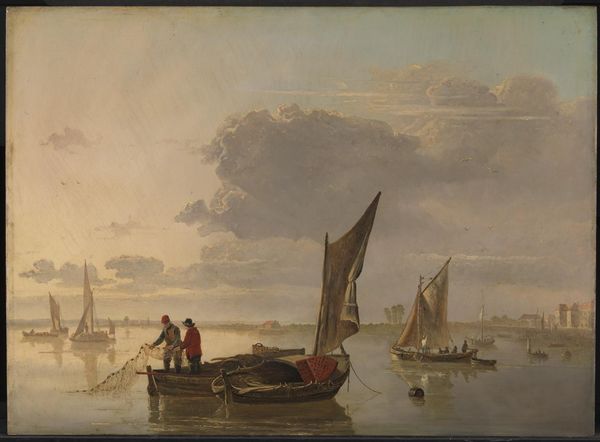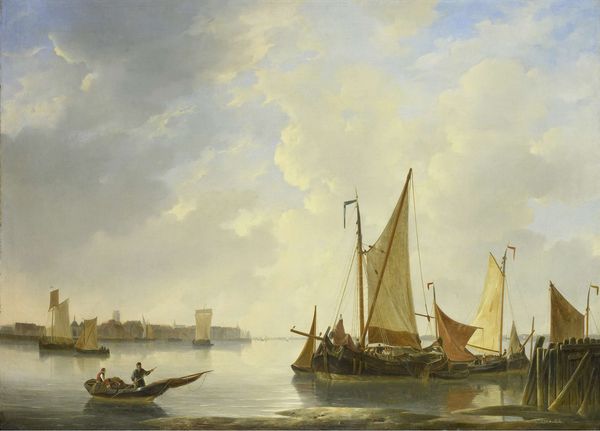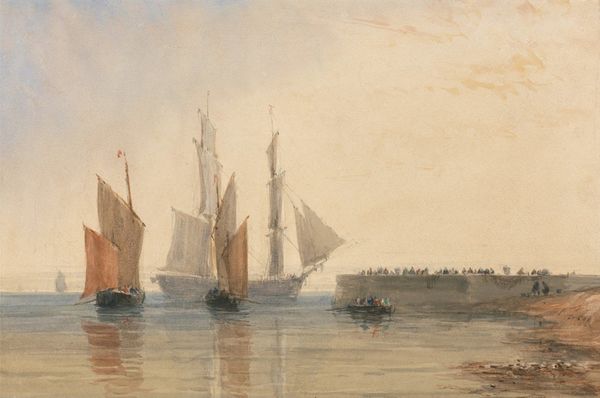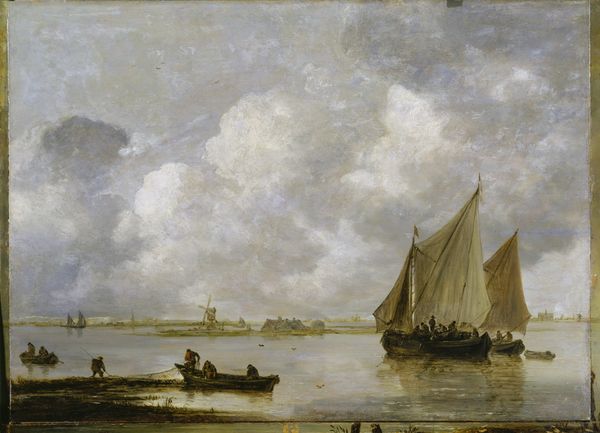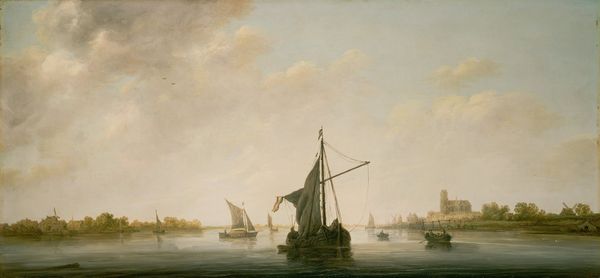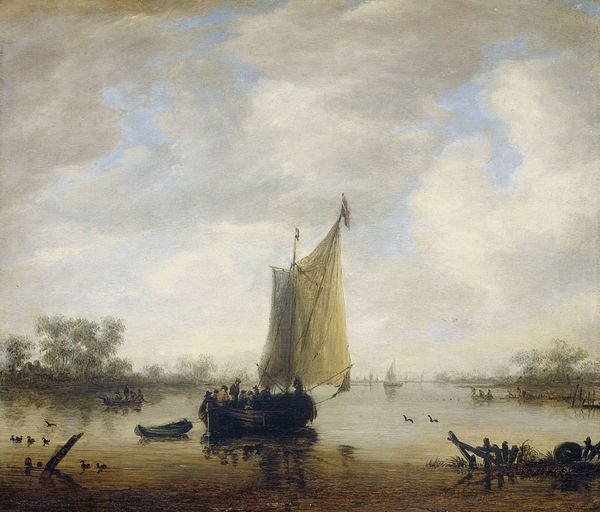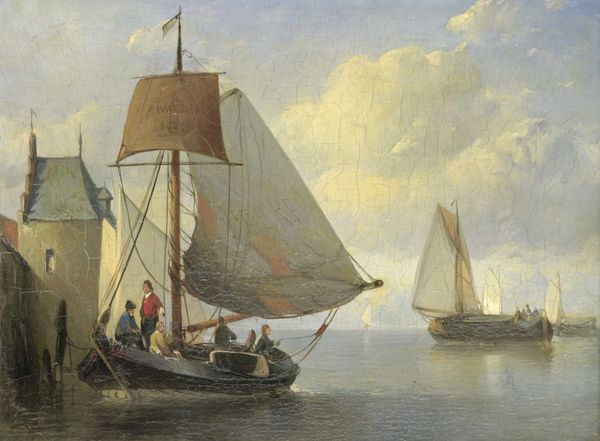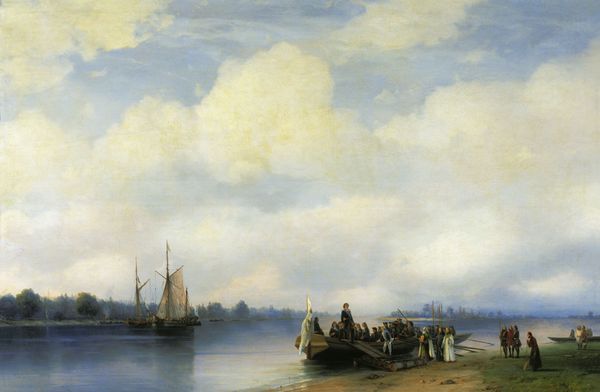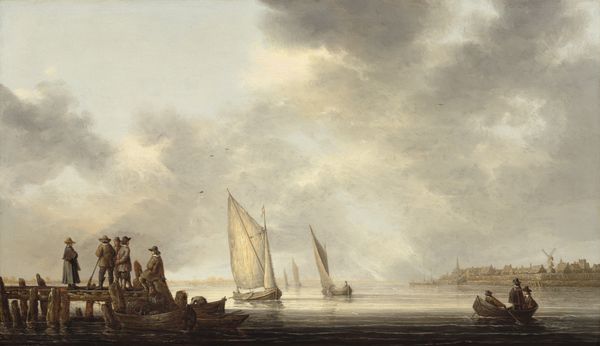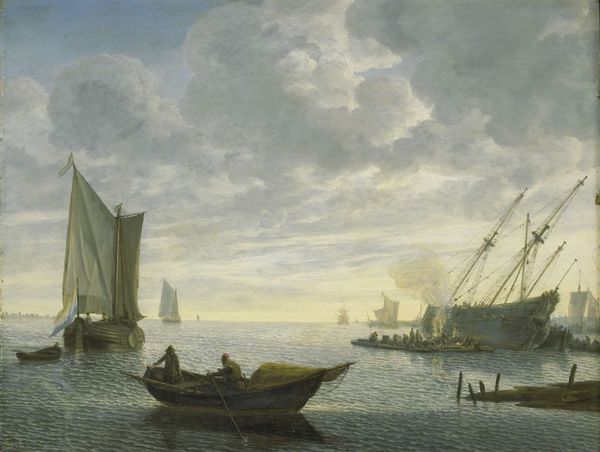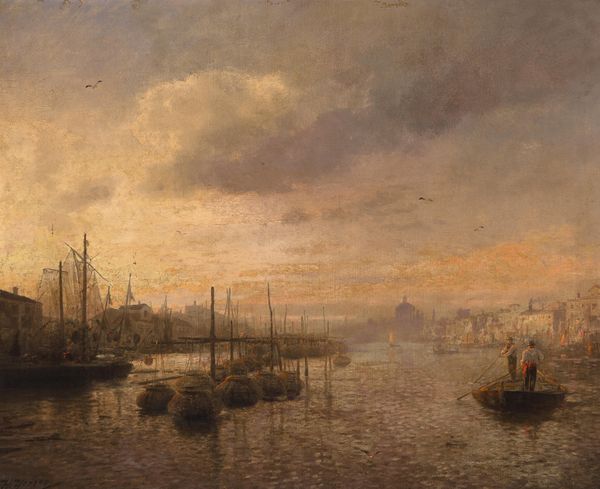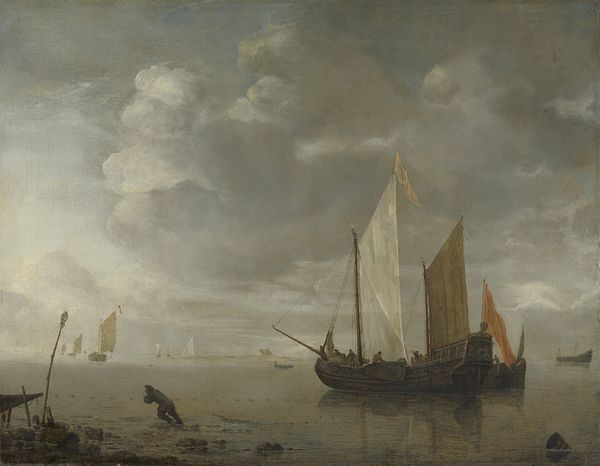
Dimensions: support: 422 x 686 mm
Copyright: CC-BY-NC-ND 4.0 DEED, Photo: Tate
Editor: This is Edward William Cooke’s "Dutch Boats in a Calm," and it’s quite striking. The muted colors and reflections create a serene atmosphere. What strikes you about the composition? Curator: The interplay of vertical masts against the horizontal water line establishes a compelling structural tension. Consider the texture also—the subtle brushstrokes rendering the sails, juxtaposed against the smoother expanse of the sky. Editor: That's a great point about texture. So, it's all about the relationship between those elements? Curator: Precisely. It's through the analysis of form, texture, and composition that we arrive at a deeper understanding of the work's aesthetic impact. Editor: I see. Focusing on how the artwork is put together gives you the clues. Thank you. Curator: Indeed. A close reading of form reveals the artist's intent.
Comments
tate 8 months ago
⋮
http://www.tate.org.uk/art/artworks/cooke-dutch-boats-in-a-calm-n00447
Join the conversation
Join millions of artists and users on Artera today and experience the ultimate creative platform.
tate 8 months ago
⋮
Cooke's reputation as a marine painter was established from the time he first exhibited at the British Institution in 1835. In 1837, he made his first trip to Holland. After that his shipping scenes began more obviously to reflect the influence of seventeenth-century Dutch painters. This picture was begun after a three month trip to Holland between July and September 1843. He painted it at the Kent home of William Wells, who was a prominent collector of British art. Vernon purchased it in 1844, having previously bought from Cooke in 1836. Cooke seems to have worked on two other pictures for Vernon, in 1840 and 1842, though neither entered his collection. Gallery label, April 1993
